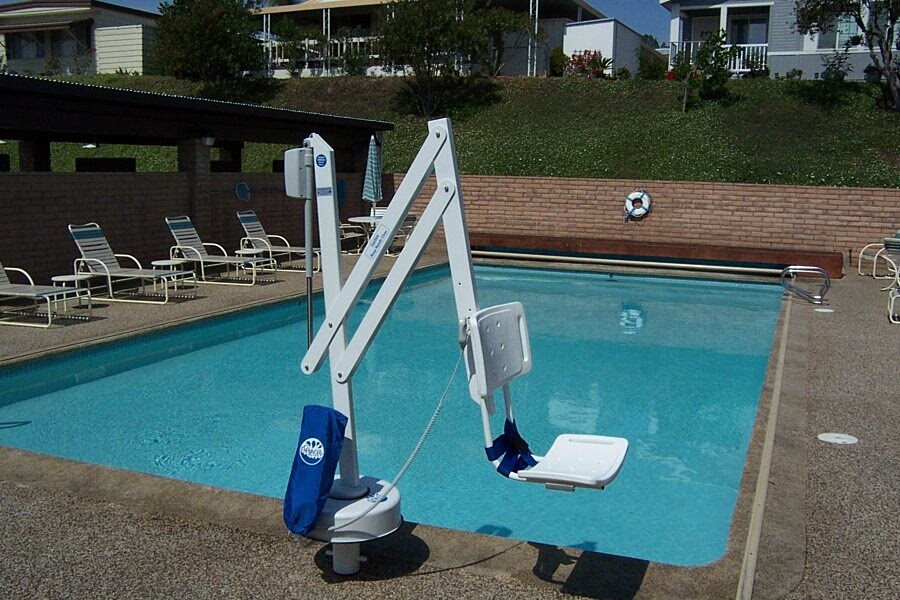After years of serious debate and development, public swimming pools must now accommodate disabled swimmers or face $55,000 in penalties.
This update to the Americans with Disabilities Act (ADA) applies to all public swimming pools, health clubs, motels, hotels, rec centers and country clubs. But what about adding this accessory to your home pool? Is it feasible to make it accessible to wheelchair users? The answer is yes, for both above-ground and in-ground pools.

Types of Swimming Pool Lifts
Hydraulic
Also referred to as manual lifts, hydraulic lifts are powered by a hand crank mechanism. The crank raises and lowers the lift. Manual models are generally the most economic of all lifts.
Hydro-powered
These swimming pool lifts are powered by water pressure, and are an increasingly popular choice, as the operational costs are no more than your monthly water bill. These models are almost exclusively permanent installations.
Battery Powered
Battery power is mostly seen in portable pool lifts, but can also be found in permanent and removable ones. The batteries needed to operate these lifts can be costly.
Other Features to Consider
Installation
Some lifts attach into deck sockets, while others are anchored into the ground with cement. The installation process is reliant on the type and portability of your model, as well as the kind of pool it will be utilized in (aboveground versus in-ground). For example, water-powered lifts must be anchored near a pool’s water source to operate, and thus are typically permanently installed.
Portability
Mostly for commercial sites, portable lifts allow easy relocation between multiple pools or spas with no installation required. If you require portability at a less frequent level, a removable lift could provide a more economic alternative. Removable lifts do require installation into a fixed location, but can be removed when not in use.
Independence
When researching pool lifts, one must consider the independence of the user. Manual lifts generally require an extra set of hands to maneuver the hand crank, while hydro-powered lifts often more friendly to a single user.
Range of Motion
Consider the height capability as well as the rotation of the seat that will be most convenient for the user. A greater range of motion can be an added safety feature as the rotational capability allows the seat to be positioned farther from the water’s edge, over the pool deck.
Swimming pool lifts empower wheelchair users in many so many ways, from fostering independence to enabling aquatic therapy programs. Today there is an array of options to choose from, ensuring that any pool owner can find the perfect one for your own backyard pool.
